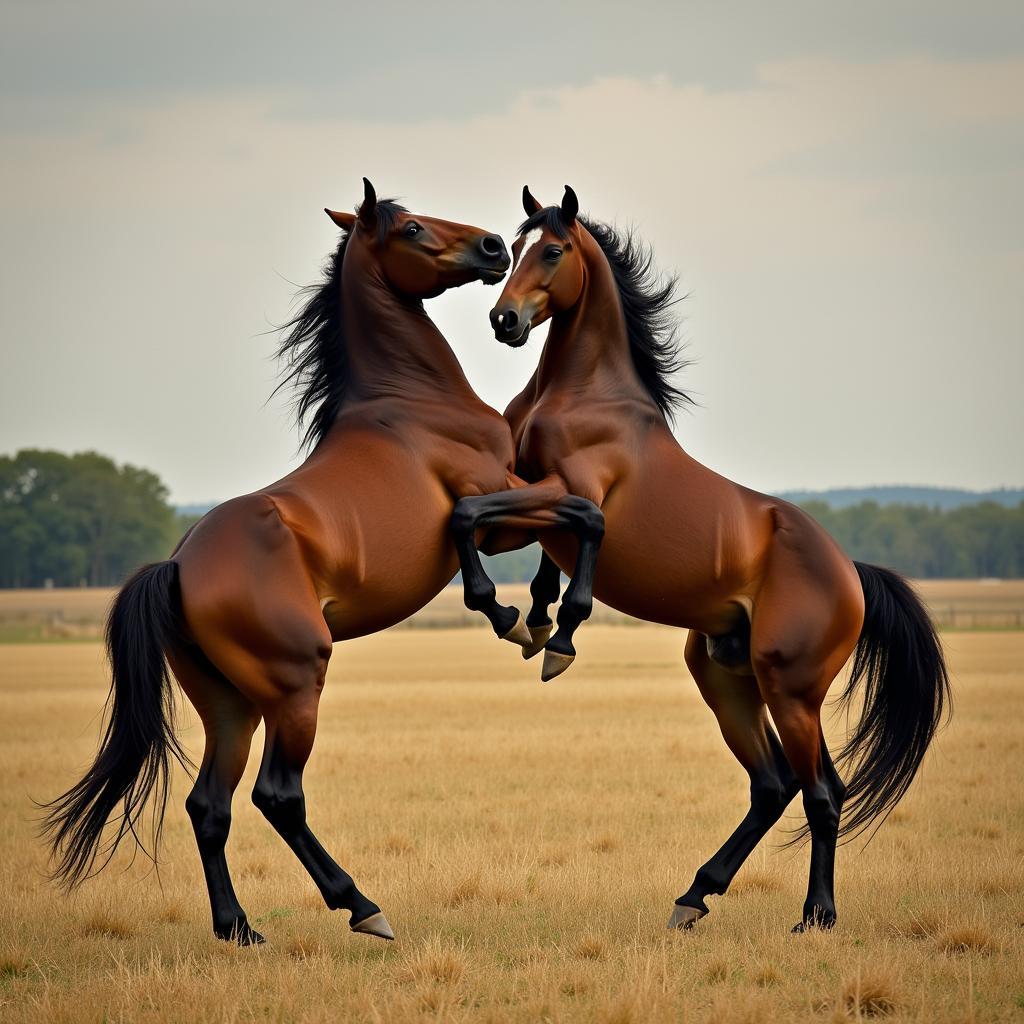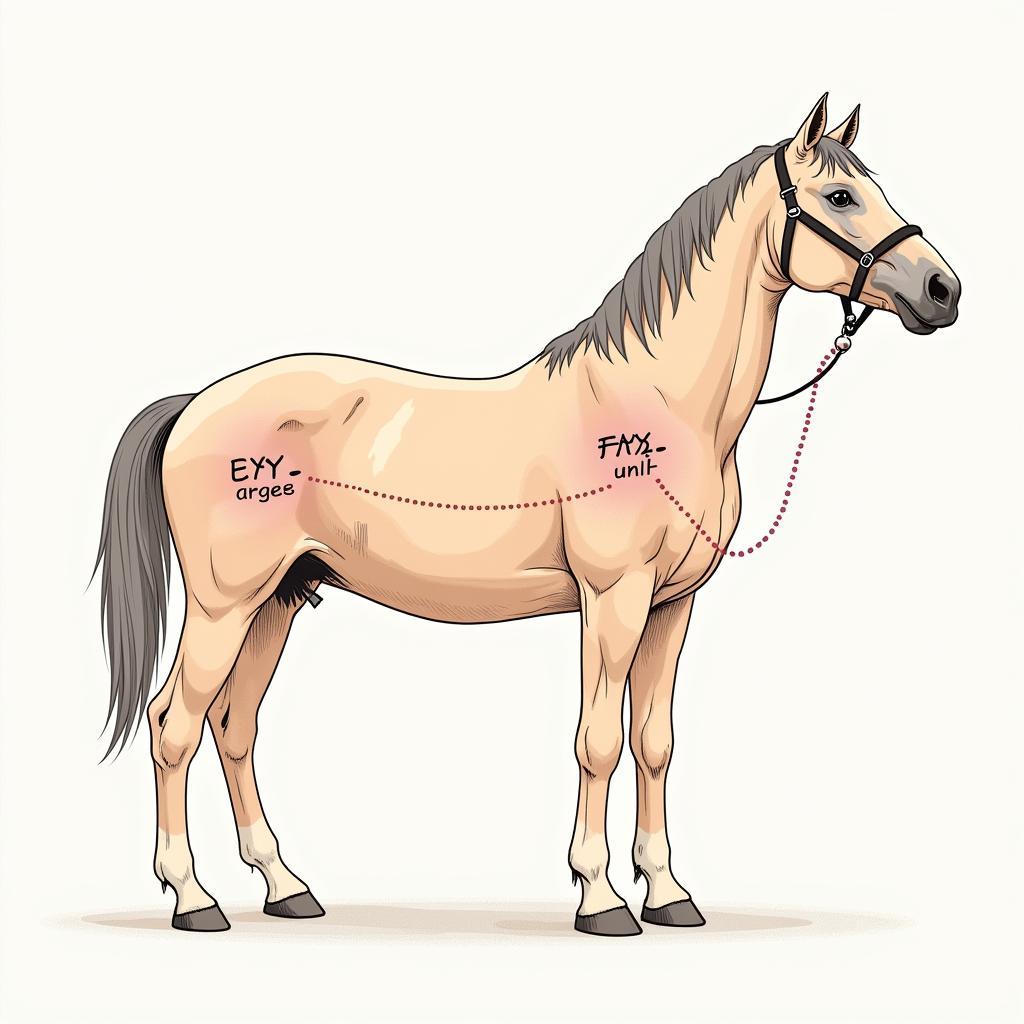Horse breeding, often searched for using terms like “Horse Cums In Pussy,” is a complex process that requires careful planning and a deep understanding of equine reproductive anatomy and physiology. This article aims to provide an informative and comprehensive overview of horse reproduction, moving beyond crude terminology and focusing on the scientific and practical aspects of the subject.
The Mechanics of Horse Mating
Equine reproduction involves specific behaviors and biological mechanisms. Stallions, the male horses, exhibit courtship behaviors towards mares, the female horses, including vocalizations and physical interactions. When a mare is in estrus, also known as “heat,” she is receptive to the stallion. The stallion mounts the mare and deposits sperm into her vagina. This process, known as copulation, is the crucial step in natural horse breeding.
 Horse Mating Process: Stallion Mounting a Mare
Horse Mating Process: Stallion Mounting a Mare
The Mare’s Reproductive Cycle
Understanding the mare’s reproductive cycle is essential for successful breeding. The estrous cycle, typically lasting 21 days, includes the estrus phase, when the mare is receptive to breeding, and diestrus, when she is not. Hormonal changes during estrus signal the mare’s readiness to mate and ovulate, releasing an egg from her ovary.
Recognizing Estrus in Mares
Recognizing the signs of estrus is crucial for timing breeding. These signs can include frequent urination, winking of the vulva, raising the tail, and a general interest in the stallion. Veterinarians can also perform ultrasound examinations to confirm ovulation.
 Mare Reproductive Cycle: Estrus and Diestrus Phases
Mare Reproductive Cycle: Estrus and Diestrus Phases
Stallion Fertility and Semen Evaluation
Stallion fertility plays a significant role in successful breeding. Semen evaluation is a valuable tool to assess sperm quality, including motility, morphology, and concentration. This information helps determine the stallion’s breeding potential and optimize breeding management.
Factors Affecting Stallion Fertility
Various factors can influence stallion fertility, including age, nutrition, and overall health. Regular veterinary check-ups and proper management practices are crucial for maintaining optimal reproductive health in stallions.
Gestation and Foaling
After successful mating and fertilization, the mare enters the gestation period, which lasts approximately 11 months. During this time, the fetus develops inside the mare’s uterus. Proper prenatal care is essential for ensuring a healthy pregnancy and successful foaling, the birth of the foal.
Conclusion
Horse breeding is a complex but rewarding process that requires careful planning and a deep understanding of equine reproduction. By understanding the intricacies of the mare’s reproductive cycle, stallion fertility, and the stages of gestation and foaling, breeders can increase their chances of success and contribute to the preservation of healthy horse populations. The use of appropriate terminology and scientific knowledge is essential for responsible and ethical breeding practices.
FAQ
- How long is a horse’s gestation period? Approximately 11 months.
- What are the signs of estrus in a mare? Frequent urination, winking of the vulva, raising the tail, and interest in the stallion.
- How often do mares come into heat? Every 21 days on average.
- What is semen evaluation? A process to assess the quality of a stallion’s sperm.
- What factors affect stallion fertility? Age, nutrition, and overall health.
For further information, explore other articles on our website related to horse health, breeding management, and foal care.
Contact us for 24/7 support at Phone: 0772127271, Email: [email protected], or visit us at QGM2+WX2, Vị Trung, Vị Thuỷ, Hậu Giang, Việt Nam.